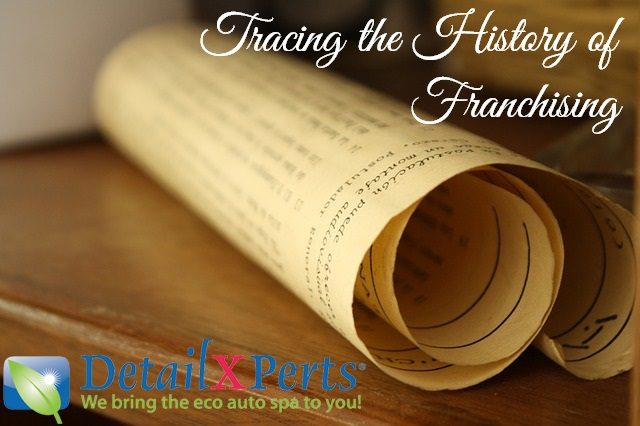Franchising helps companies grow and expand by allowing other entrepreneurs to open franchises and operate in different locations. However, do you know where the concept of franchising came from? You’ll be surprised to know that the history of franchising dates back to medieval times.
Here’s a short video on the history of franchising.
History of Franchising – The Beginning
The concept of a franchise system began in the Middle Ages. The first ever franchisees were the high church officials who were granted a license to maintain order, assess taxes, and operate their own businesses. In exchange for “protection”, they paid the local government royalties which are comparable to franchise fees and other business-related fees of today.
The “Franchise Kings”
The application of the franchising concept became more widespread in the Colonial Period. Local lords, kings, and other European monarchs started to give individuals rights to perform and manage certain market activities which include establishing markets, organizing fairs, and hunting. Later on, the European monarchs gave these local citizens the task of establishing colonies. Once they establish a colony, they are now able to enjoy sovereign protection in exchange for taxes or royalties. Kind of like the protection businesses provide their different branches.
SPATEN (1840s)
A franchisee paying the mother company in order to have the right to use the company’s name, systems, and branding – one of the aspects of the franchise business – was developed by a German brewery in the 1840s. When the SPATEN, a local beer brewer, allowed taverns to sell their beer, the tavern owners had to pay in order to use the brewery’s trade name. Much like how modern-day franchisees pay in order to benefit from a company’s already established brand and reputation.
I.M. Singer & Company (1880s)
The manufacturer of Singer sewing machines has introduced better distribution methods – granting distributorship licenses for a fee, franchisees training customers how to use their product, and allowing customers to pay in installments. In the mid-1800’s, there was a huge demand for sewing machines since they appeared in the market. But the steep price of the sewing machines and the limitation in terms of locations selling their product held back the company’s sales. Pursuing the franchising option created a win-win situation for both the company, its licensees, and the customers.
Automobile Dealership
Another product that became highly in-demand quickly after its launch in the market is the automobile. When the method of selling automobiles through mail-order catalogs proved to be inefficient, Henry Ford and other automobile manufacturers came up with a better strategy for product distribution – automobile dealership.
Soon automobile dealerships opened one after the other, followed by gasoline service stations and restaurants and their respective franchises. The last two aimed to address the demand for sources of energy for automobiles (fuel) and drivers (food).
McDonald’s
The burger place we all know and love, McDonald’s, is probably one of the most prolific fast-food franchises of all time. 80 percent of McDonald’s 34,000 restaurants in 118 different countries today are franchises.
The combined idea of the McDonald brothers and a salesman, Ray Kroc, led to the expansion of the franchise. The brothers wanted to grow the business but didn’t know how until they partnered with Kroc, a seasoned businessman.
They slowly opened new locations throughout the United States. The McDonald brothers eventually sold their share to Kroc, who had a bigger vision for the restaurants. He turned them into the giant chain system today, with over 80% of the locations owned by franchisees.
The history of franchising developed over a long period of time. Each era introduced a new concept or idea that eventually led to the current model of franchise businesses.
Interested in joining a well-established brand with proven success? Check out DetailXPerts for franchise opportunities.





